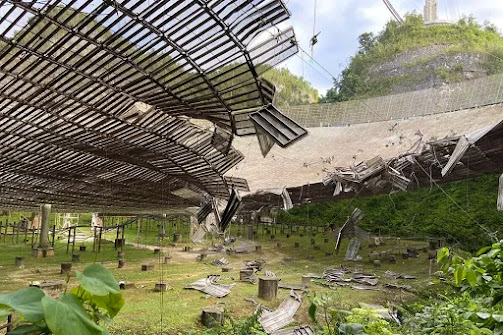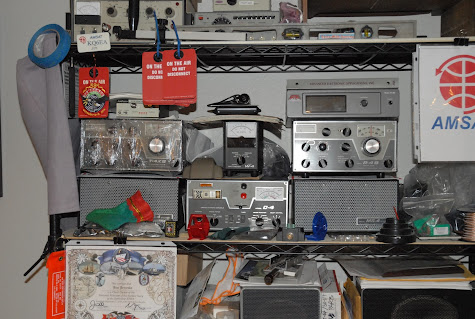The Arecibo Radio telescope is being shut down.
Not just shut down, but decommissioned and dismantled.
The installation had suffered damage from the hurricanes and tropical storms, causing one of the feeds (the 70cm "Line Feed") to break loose, fall, and damaging about 30 out of the 38,000 aluminum panels used for the reflecting surface.
Then in August, one of the suspension cables broke, causing a 100' long gash to the reflector. Then in early November, a second cable snapped, causing much more extensive damage.
So rather than spend the money to repair and upgrade the facility, they're going to tear it down.
This is just as sad as when the 300' Green Bank Telescope collapsed.
I suppose you could say these "Old Dinosaurs" of Science are obsolete, but Very Large Aperture Antennas are extremely useful devices at radio frequencies. Unless you're a Radio Geek, or you grew up watching the transition from analog to digital electronics, you might not "get it". Yes, with today's Digital Signal Processing techniques applied to Very Long Baseline Interferometry, you can use hundreds (or thousands) of smaller dish antennas, and combine them into one extremely large Synthetic Aperture. Yes, the numbers are astounding, but I can't help but wondering what we've given up to get these extraordinary sensitivities and resolutions. Car and Driver recently comparison tested the new Corvette with a new Porsche Cayman. The Corvette generated staggering numbers on the track and in testing, but the drivers said it felt cold and antiseptic doing it, like it had sold it's soul for performance, while the Porsche seemed alive and worked with you so you both did your best. It's what I call "An Analog Thing", and I get it entirely. Maybe even grok it. That Porsche manged it pull it off in a car packed with more electronics than the Apollo Command Module is a very admirable thing.
Anyway.....it's too bad that it's being dismantled. It was a very useful instrument, and it will be missed.















.jpg)
